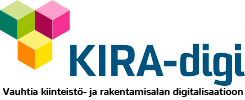The City of Hyvinkää uses crowdsourcing to build facades for 3D city model
The City of Hyvinkää invites the residents of the municipality to participate in building the 3D buildings of city models. Photographs are used for creating improved facades in the 3D model.
What kind of problem is the project trying to solve?
There are more than 1.5 million buildings in Finland, which is why producing high-quality 3D building models is hard work. A 3D city model of the buildings can mostly be produced automatically by using the high-definition aerial shots for texturing facades. When viewed from the flight altitude, the end result is of excellent quality. The task proves more challenging when moving to the eye level. This is when distortions are noticed: balconies photographed from above are warped against the facade and the trees or their shadows in front of buildings are pictured against the buildings.
Producing models textured from the street level would be unreasonably expensive to the city. This project experiments with using crowdsourced images. In the project, residents are asked to submit photographs that can be used in creating the facades of the buildings.
Objective: The inclusion of residents’ photographs in creating 3D models of cities
The experiment aims to find out whether a 3D city model of high visual quality can be created by using photographs taken by the residents. Using crowdsourcing in the creation of 3D models of facades could bring about cost savings of millions of euros.
What is done in this project?
There are two alternative operating processes that will be implemented in the experiment that will result in a suggested manner of operation for the future. In the first operating process, residents provide the photographs of the facades of buildings. In the second operating process, residents will also process the photographs and attach them as facades of vectored 3D buildings. The experiments make use of a browser-based 3D city model where the residents can choose the LOD2 buildings of their choice and take photographs of the related facades.
What are the expected results of the experiment?
The experiment will show whether it is possible to use crowdsourcing in creating the facades of 3D buildings.
Who benefits?
The experiment benefits all organisations within the area of built environments that create or use 3D city models in their operations (e.g. cities, companies involved in urban development and National Land Survey). The project also benefits the citizens that participate in and follow the development of the city.
The resulting 3D service, including its crowdsourcing functions, will be made available to citizens and the results will be openly presented to the Ministry of the Environment. Going forward, National Land Survey may utilise the process in creating facades to the national terrain database (KTMK) by using the open 3DCityDB system.




